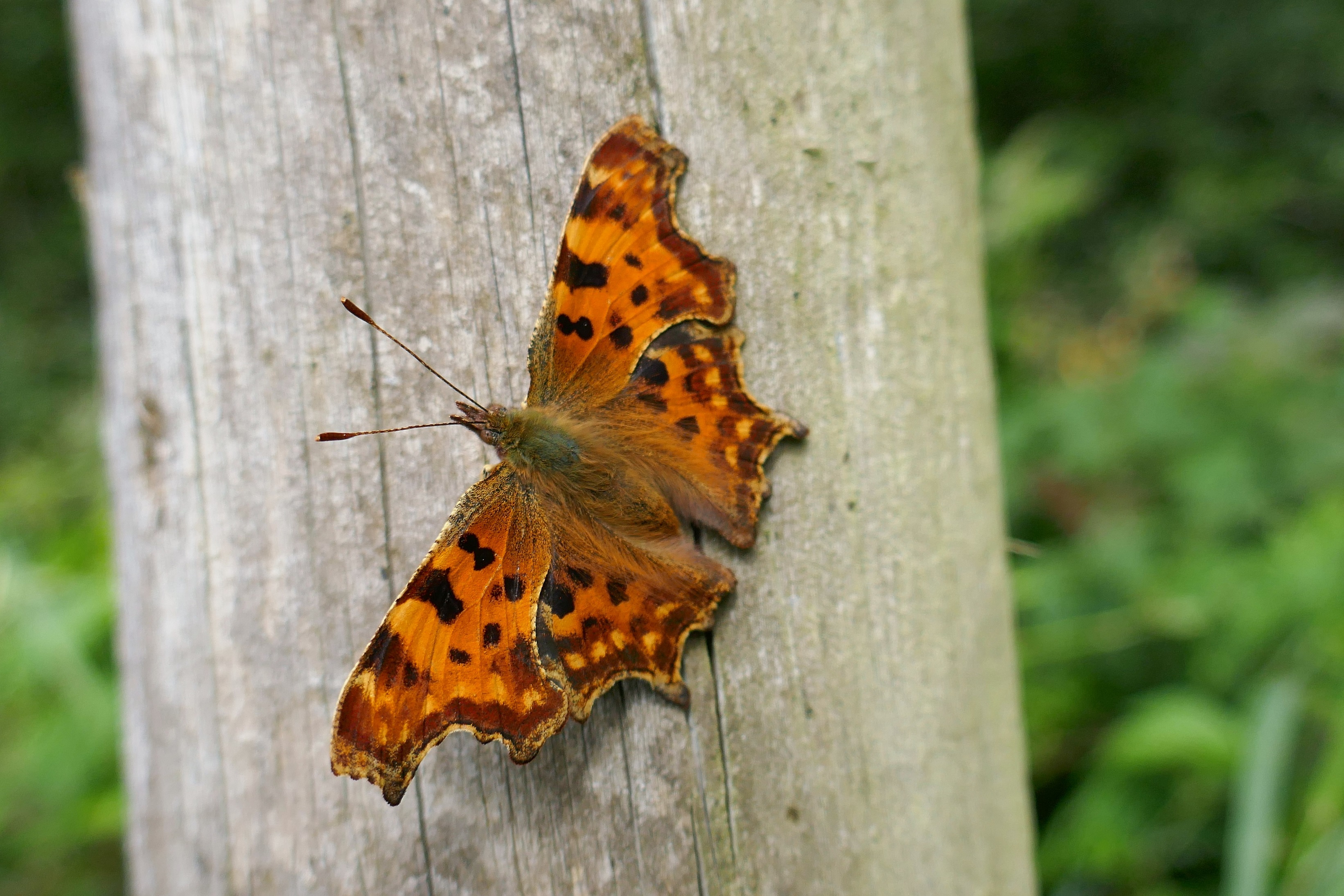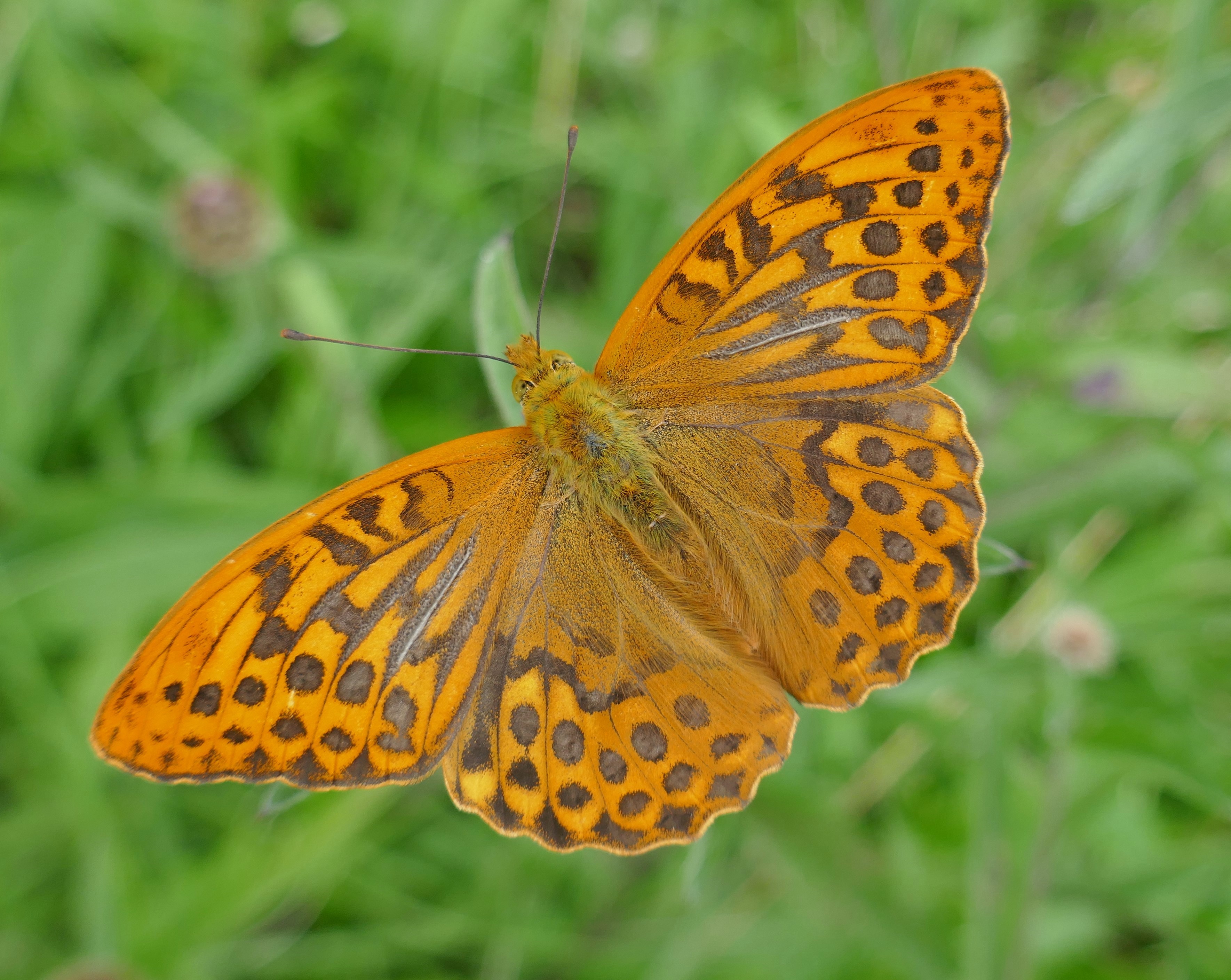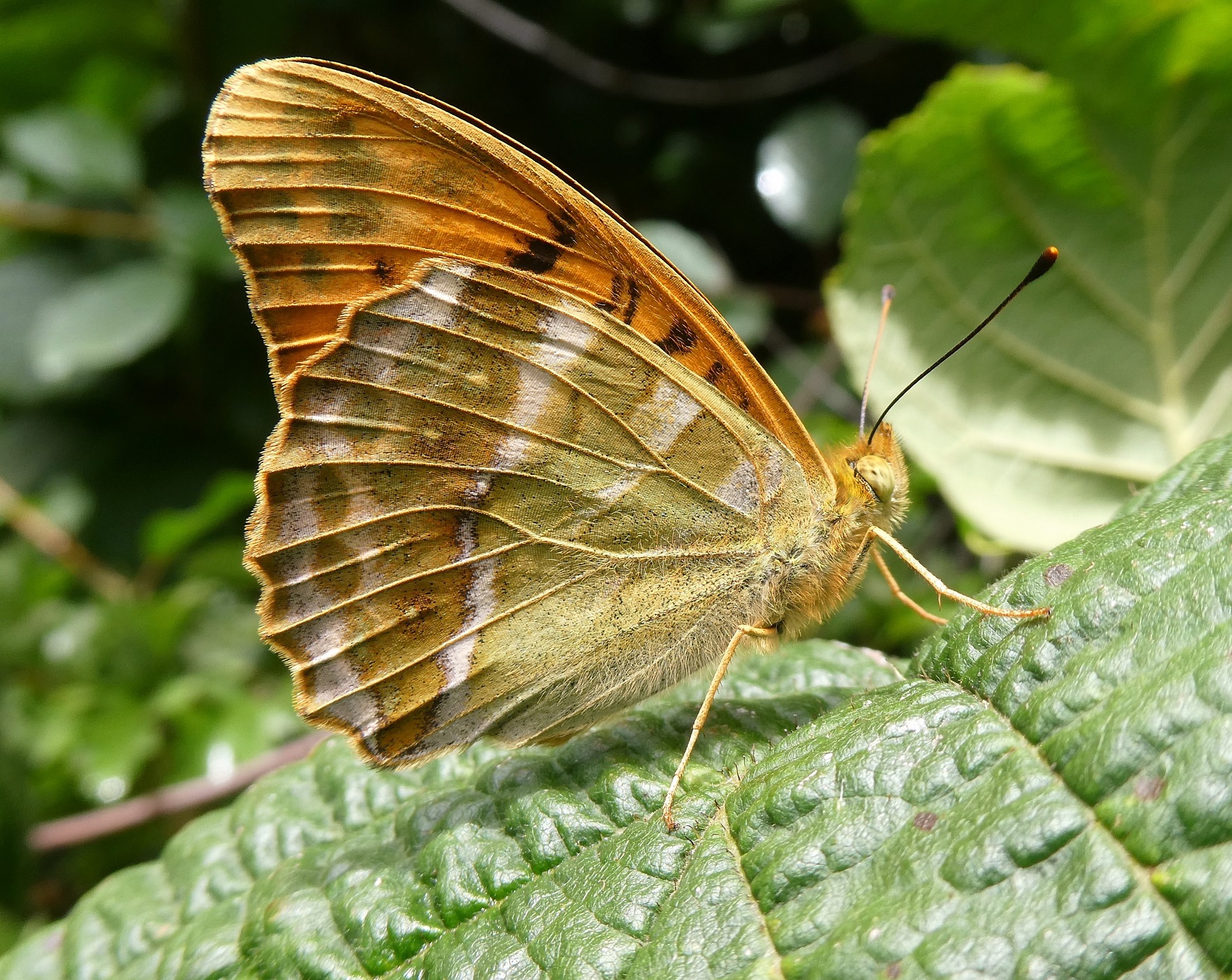To date, July 2022 has produced some dull, overcast weather and a few days of extremely hot, but not uniformly sunny conditions. In June, the percentage of long-term average sunshine values were variable across the country. The percentage of monthly sunshine values ranged from 82% (monthly sunshine total of 128.4 hours) at Shannon Airport, Co. Clare to 104% (monthly sunshine total of 166.4 hours) at Casement Aerodrome, Co. Dublin.
Direct sunshine is important for some of our day-flying moths and butterflies. Moths like the Least Minor Photedes captiuncula ssp. tincta and Forester Adscita statices and butterflies like the Brimstone and Comma fly only or mainly in bright sunlight. In dull weather, these species remain hidden.

One of our most attractive high summer butterflies is a woodland butterfly and our largest native species. The Silver-washed Fritillary, named for the silver wash makings across moss-coloured hindwing undersides, is a flamboyant, characterful and handsome butterfly, and is widely but locally distributed throughout Ireland, haunting woods comprising mainly native trees with a high percentage of sunlight penetrating down to the woodland herb layer, where the butterfly must be able to find its breeding plant, the Common Dog-violet.
A delight on the wing, males are especially frenetic movers in bright sunshine, dashing jaggedly and powerfully over wood edges and glades before dipping down and apparently vanishing. A careful approach often brings a view of the male on pink bramble blossom, a sweet contrast with his hot orange uppersides.
The onset of dull conditions or light rain will set him off to the tree-tops, where roosting takes place, and his slivery green hindwing underside blends with the silver, watery sheen of wet leaves.
The female is more heavily spotted on her uppersides, and is duller overall, with more subdued colouring. She is often, although not always, larger than the male, with the wing spanning up to 80 mm. She is more circumspect in her habitats, avoiding heavily used feeding areas once she has mated, and less dramatic in her flight, although very capable of making flights across unwooded terrain in her search for new breeding grounds. When ready to lay eggs, she enters the dimly-lit areas of woodland, leaving the sun-filled clearings to search for violets growing near trees. When located, she flies upward to a tree trunk and lays her eggs, typically, or always, singly.
The caterpillar over-winters on the tree without feeding on anything aside from its eggshell. Eight long months later, he descends to the violets his mother located, and begins to feed.
The Silver-washed Fritillary was featured on RTE Radio 1 last Monday, 18 July, on the Mooney Goes Wild Show. A must-see butterfly, the newly emerged male seen perching in bright sunshine is a summer jewel. The peak of its flight season may vary according to the locality, but late July and early August are great times to look.
Good places to search can be found by entering ‘Silver-washed Fritillary’ as a search term on our Records page: for 2022 records, see https://butterflyconservation.ie/wp/records/2022-2/
For its seasonal topicality, its popularity among butterfly lovers and its magnificent flight and beauty, we offer him to you as The Butterfly of the Month.



